Keeping Aussie red meat on plates around the globe during COVID-19
14 May 2020
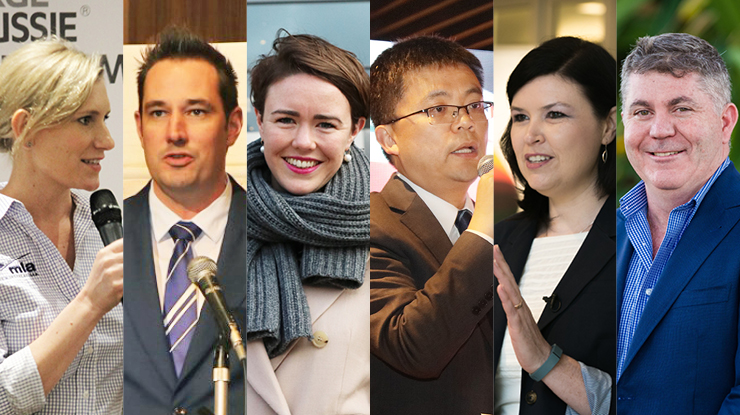 MLA Managers: Ellen Young, Scott Walker, Mary Johnson, Joe Zhu, Catherine Golding and Nick Meara.
MLA Managers: Ellen Young, Scott Walker, Mary Johnson, Joe Zhu, Catherine Golding and Nick Meara.
COVID-19 is sweeping through the global economy in an unprecedented way. The volatile nature of the virus is having a rapid and overbearing influence on the market, including on the demand for red meat across the globe.
There’s always two sides to every story and with most of the world living under some kind of restrictions, there has been both a spike in retail sales and a plunge in foodservice orders – and this is having a flow-on effect on red meat.
MLA is responding to these trends by implementing a global response strategy to adapt marketing campaigns and ensure red meat remains on plates around the world (see below).
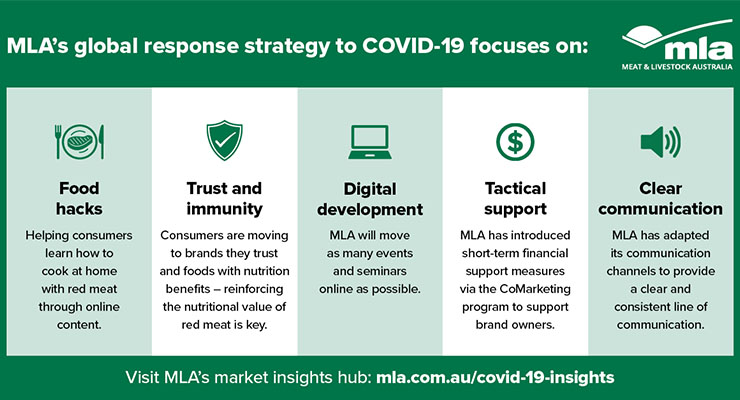
Here, MLA’s Managers based in Australia’s major red meat export regions provide insights into how red meat consumption is changing in the face of COVID-19 disruptions.
SOUTHERN ASIA
MLA Regional Business Manager – Southern Asia, Ellen Young
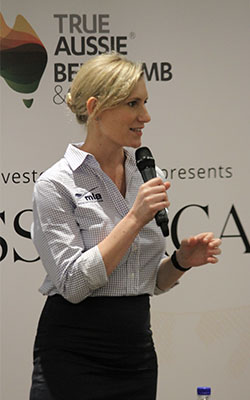
“In Southern Asia, consumers were concerned Australian red meat wouldn’t be available so panic buying set in and demand for all meat cuts was high.
However, supply was secured in Singapore through the ‘International Freight Assistance Mechanism’ introduced by the Australian Government which re-established air freight to high-end protein markets and consumers settled down with their red meat purchases.
Where mainstream media provides a stark view of COVID-19 across Southern Asia, social media channels are thriving as people reconnect and find inspiration online.
The role of food, especially on social channels has shifted from a narrative of guilt to a thriving activity which brings joy.
During the pandemic, brands in Southern Asia are stepping up to provide real solutions and create positive impact. The True Aussie brand needs to do the same.
Tapping into social conversations now will allow MLA to add more value to consumers during this pandemic and build new red meat behaviours for the future. With this in mind, the True Aussie brand has shifted its messaging and social purpose to:
"As the world moves indoors, True Aussie Beef and Lamb makes sure you still get the best of the great Aussie outdoors.”
JAPAN
MLA Regional Manager – Japan & Korea, Scott Walker
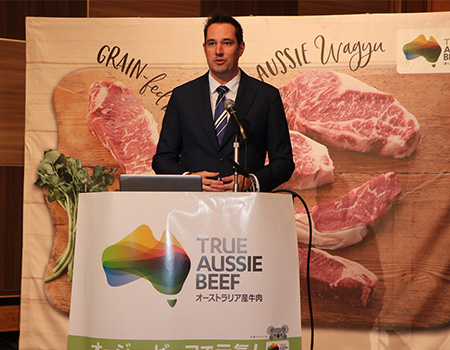
“The pandemic hit the Japanese economy in three stages: a reduced number of Chinese tourists, a one-year delay of the Olympics and Paralympics and then reduced business activity due to social distancing regulations.
Hotel banquets for weddings and business functions have been a key outlet for Australian beef, a segment which has fallen significantly.
Retail red meat sales remained strong, particularly products offering time-saving solutions. However, the demand for higher value cuts became subdued as consumers went into ‘economising mode’ with the possibility of an economic downturn.
MLA is working closely with retailers to provide promotional tools to drive demand for premium cuts. Educating consumers through social media on how to prepare meals with less familiar cuts is critical to cushion the impact of reduced foodservice demand.
Nutrition, health and wellbeing are at the forefront of consumers’ minds, driving them to known and trusted brands. Australian beef has a long and trusted history of quality and safety in the Japanese market therefore, this messaging is reinforced in our summer campaign.”
EUROPE & UNITED KINGDOM
MLA Market Access Manager – Europe, Mary Johnson

"From early March, the foodservice sector ground to a halt with restaurants and hotels forced to close so consumers started stocking up at retail.
In early to mid-March we saw a big shift in the retail landscape with shoppers purchasing economical mince and diced red meat products in larger quantities than usual.
We’ve got a glut of high value cuts due to the closure of foodservice, consumers are reticent to splurge and entertaining is now off the cards during the popular spring and summer seasons. This throws out the carcase pricing architecture because the cuts which traditionally make up the carcase value are being left behind.
In the Europe market, industry’s ambition is to improve Australia’s market access which is currently restricted by volume based quotas.
Free trade agreement negotiations with Europe are an important component and despite COVID-19 travel restrictions, Australian and European government negotiators met via video conference in early May to continue negotiations.
Though the impacts of COVID-19 will continue to be felt for some time, it’s on us to make sure dialogue and trade stay open throughout this time. This includes continuing our advocacy engagement via digital channels so we can work towards the outcomes which will benefit our industry for years to come.”
CHINA
MLA Country Manager – Greater China, Joe Zhu
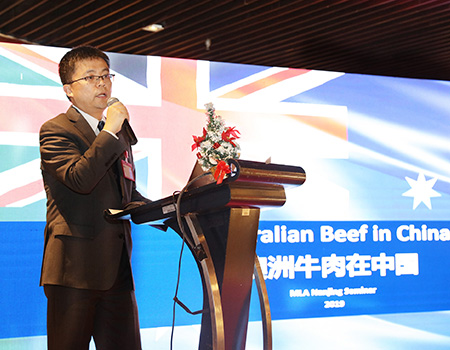
“Given China was the first to experience COVID-19, many countries have been eagerly watching to see how China’s retail and foodservice channels recovered.
COVID-19 battered Chinese foodservice – an industry which represents more than half of beef consumption in China.
All restaurants were closed during the Chinese New Year holiday and they remained closed until late March.
However, as government lifted restrictions on foodservice, the recovery process seemed slower than expected with most venues still operating at 50-70% of their pre COVID-19 level – consumers need time to build trust.
Chinese consumers shunned wet markets so big retailers and e-commerce delivery platforms experienced exponential growth ranging from 100-400%. Fortunately, Australian red meat is skewed more towards the bigger retailers and therefore less impacted by COVID-19.
MLA research reported during the peak of the pandemic, more than 30% of affluent Chinese consumers were eating more beef, and less poultry, pork and fish.
Chinese consumers were shopping more regularly, buying more product and favoured Australian red meat – the provenance value clearly more important than ever!
Before COVID-19, consumers were buying beef on taste, freshness and quality. Since the pandemic, they reported safety, beef's high nutritional value and that it supported overall health and immunity, as the main reasons for purchase.
Australian beef is seen as a quality product so there are some real positives for us out the other side".
NORTH AMERICA
MLA Business Development Manager – North America, Catherine Golding
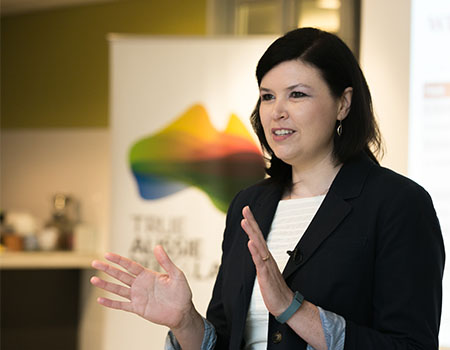
The economics of the situation have had a massive impact on consumer confidence and it’s likely spending will be affected for the next year or more after the pandemic subsides.
However, it’s somewhat good news for red meat as it has remained centre of plate, albeit with lower value cuts.
The cut mix has changed and we’re seeing higher demand for mince products which are more familiar and easy-to-cook whereas the prime middle cuts like lamb racks, beef tenderloins and strips are seeing a downturn as these are primarily foodservice offerings.
Marketing activities have pivoted to ensure the messaging of the Simply Spring consumer campaign remained relevant.
Cooking at home, comfort food and eating healthy are all trending right now. These are certainly conversations which red meat can be a part of.
MIDDLE EAST & NORTH AFRICA
MLA Regional Manager – MENA, Nick Meara

“Ramadan is usually a high consumption period for red meat and there’s no question the foodservice industry took a hit this year.
With Ramadan falling in the middle of the COVID-19 pandemic, the Muslim community adapted to feasting at home rather than in restaurants and hotels. However, red meat was still on the menu as Iftars went ahead with families cooking at home, using larger cuts such as lamb shoulders and legs for slow cooking.
Where possible, a majority of red meat destined for foodservice was redirected into the retail channel but not all red meat cuts will cut the mustard in retail.
High end cuts such as Wagyu cube rolls with a marble score six and over, usually served in high-end restaurants, just won’t sell in retail and therefore we expect a downturn in sales.
We’ve adapted our marketing activities to continue driving demand for red meat in MENA.
The good news is we’ve already been working hard these past few years building our online presence. We’ve got strong foundations in place to continue talking to consumers about red meat via social media.
We adapted the messaging to provide more content such as tips and tricks for storing and thawing red meat as well as recipe ideas for cooking at home.”


